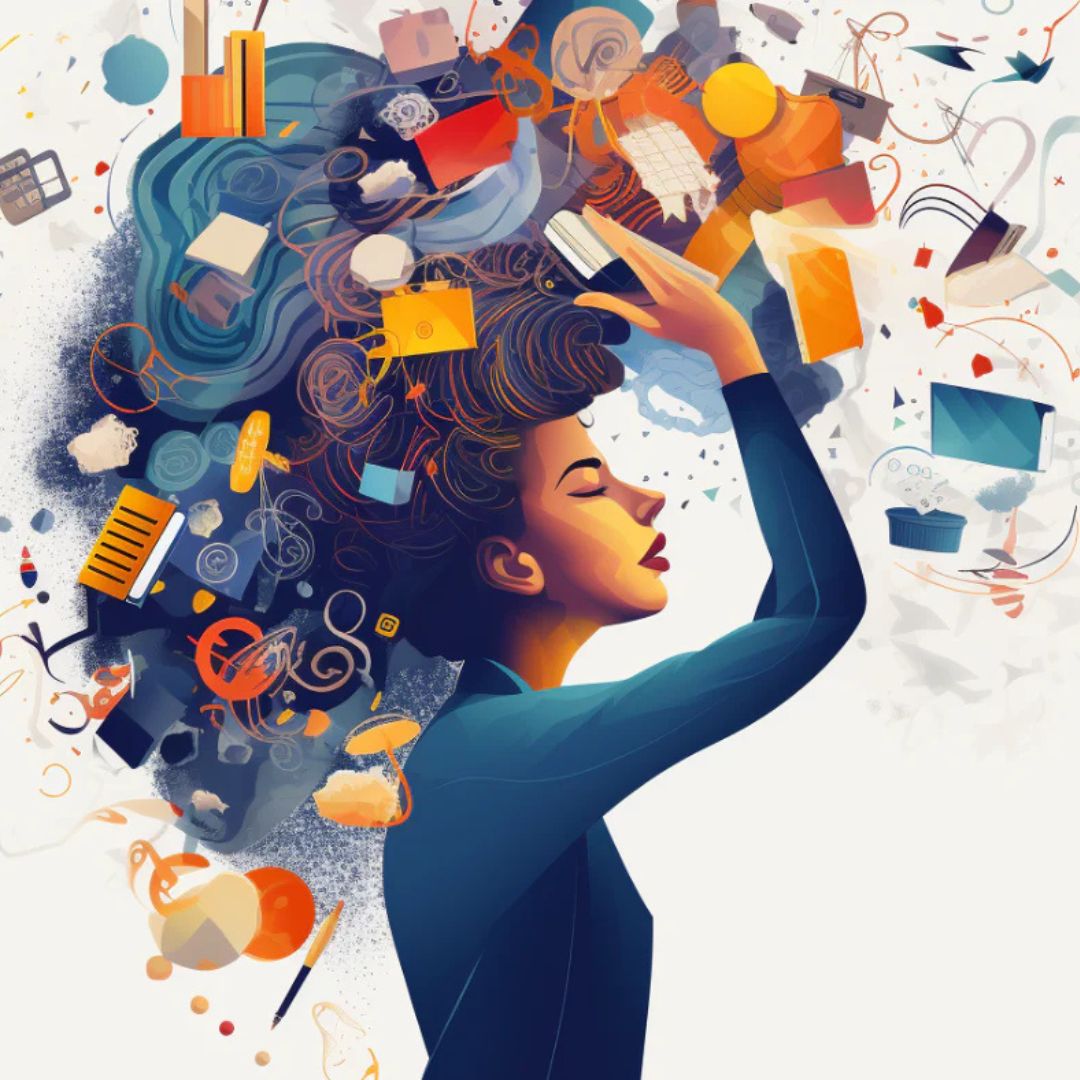Living with ADHD: Challenges, Strengths, and Daily Life

Strong 8k brings an ultra-HD IPTV experience to your living room and your pocket.
Attention-Deficit/Hyperactivity Disorder (ADHD) is more than just trouble focusing. It’s a neurodevelopmental condition that affects how people think, feel, and interact with the world around them. While ADHD is often associated with hyperactivity in children, its symptoms can persist into adulthood and manifest in various ways across a person’s life. Living with ADHD involves navigating both obstacles and hidden strengths. This article explores what it means to live with ADHD—from everyday challenges to unexpected advantages—and how individuals manage their lives with this condition.
✍️ Struggling with ADHD at work? Our detailed ADHD article explains productivity strategies, therapy options, and coaching techniques that professionals can adopt.
Understanding ADHD
ADHD is a brain-based disorder that typically begins in childhood but often continues into adulthood. It’s characterized by patterns of inattention, hyperactivity, and impulsivity that interfere with functioning or development. There are three main types of ADHD:
Inattentive Type (previously known as ADD): Difficulty sustaining focus, following instructions, or organizing tasks.
Hyperactive-Impulsive Type: Excessive movement, fidgeting, and impulsive behaviors.
Combined Type: A mix of both inattentive and hyperactive-impulsive symptoms.
Everyone may experience these traits from time to time, but for those with ADHD, these behaviors are persistent and disruptive.
Daily Life with ADHD: The Challenges
1. Time Management and Organization
One of the most common struggles for people with ADHD Management. Tasks that require long-term planning or multiple steps—like preparing for a trip or completing a work project—can feel overwhelming.
Many individuals also experience “time blindness,” which makes it difficult to estimate how long a task will take or how much time has passed. This often leads to chronic lateness, procrastination, or missed deadlines.
2. Maintaining Focus
Sustaining attention is one of the core challenges. People with ADHD may:
Get distracted easily by noises, thoughts, or other stimuli
Start many tasks but finish few
Zone out during conversations or meetings
Have difficulty reading for long periods or following instructions
This can affect school, work, and relationships—especially when others mistake these behaviors for laziness or carelessness.
3. Emotional Regulation
ADHD doesn't just affect attention—it also influences emotions. Many individuals report:
Mood swings
Frustration over small setbacks
Difficulty calming down when upset
Feeling easily overwhelmed
These emotional responses can create tension in relationships and contribute to low self-esteem if misunderstood by others.
4. Impulsivity and Risk-Taking
People with ADHD often act without thinking, blurting out comments, interrupting conversations, or making impulsive decisions. This trait can lead to challenges such as:
Financial trouble from impulsive spending
Conflicts in social or work situations
Unsafe driving habits
Impulsivity can be hard to control, even when the person knows their behavior may cause problems.
The Strengths of the ADHD Mind
Despite the challenges, ADHD also brings with it a range of unique strengths. Many people with ADHD have traits that, when properly supported, can become powerful assets.
1. Creativity and Innovation
The ADHD brain often thinks outside the box. Non-linear thinking, quick associations, and the ability to make unusual connections can fuel creativity in art, writing, problem-solving, and innovation. People with ADHD frequently excel in fields that reward imagination and originality.
2. Hyperfocus
Though attention can be scattered, individuals with ADHD sometimes experience hyperfocus—an intense, laser-like concentration on a task that is interesting or stimulating. During these periods, productivity and creativity can soar. Many artists, programmers, and entrepreneurs with ADHD report using hyperfocus to their advantage.
3. Resilience and Adaptability
Living with ADHD requires constant problem-solving, especially in environments not designed for neurodivergent minds. Over time, many individuals develop exceptional adaptability and resilience. They become skilled at managing chaos, finding creative workarounds, and thriving under pressure.
4. High Energy and Enthusiasm
People with ADHD are often energetic and enthusiastic, especially about topics they are passionate about. This can make them engaging friends, dynamic leaders, and fun collaborators.
Tools and Strategies for Managing ADHD
Living well with ADHD requires more than just willpower. It often involves using specific tools, techniques, and supports to manage daily life effectively.
1. Medication and Therapy
Stimulant medications (like Adderall or Ritalin) and non-stimulants (like Strattera) can help regulate attention and impulse control. Behavioral therapy, cognitive-behavioral therapy (CBT), and coaching can also teach coping strategies, time management skills, and emotional regulation techniques.
2. Routines and Structure
Establishing consistent daily routines helps create predictability and reduce forgetfulness. Strategies include:
Using calendars or digital planners
Setting reminders and alarms
Breaking tasks into small, manageable steps
Keeping frequently used items in designated places
3. Technology and Apps
Numerous apps and tools are designed to support people with ADHD:
Task managers like Todoist or Trello
Time-tracking tools like Toggl or Forest
Focus apps that block distractions
Note-taking apps like Evernote or Notion
These tools can help compensate for executive functioning challenges.
4. Environmental Adjustments
Modifying the environment to reduce distractions and support focus can make a big difference:
Using noise-canceling headphones or background music
Creating a quiet, clutter-free workspace
Working in short bursts with breaks in between (Pomodoro technique)
Social Life and Relationships
Relationships can be both rewarding and difficult for individuals with ADHD. Communication challenges, forgetfulness, or impulsivity may cause misunderstandings. However, with open dialogue, support, and self-awareness, meaningful relationships are absolutely possible.
Partners, family members, and friends benefit from learning about ADHD to better understand their loved one’s behavior. Meanwhile, people with ADHD can benefit from being honest about their needs and challenges.
The Importance of Self-Compassion
Perhaps one of the most vital aspects of living with ADHD is learning self-compassion. Society often equates productivity with worth, which can lead individuals with ADHD to internalize guilt or shame. Accepting that the ADHD brain works differently—not worse—can be empowering.
Rather than constantly striving to “fix” oneself, many find it more helpful to focus on understanding their brain, using strategies that work for them, and building on their strengths.
Conclusion: Embracing the Full Picture
Living with ADHD is a journey full of both obstacles and opportunities. It’s a condition that challenges the norms of how we think, plan, and act—but it also opens doors to creativity, passion, and resilience. While managing ADHD requires effort and support, it’s entirely possible to live a fulfilling, successful life with it.
By recognizing both the struggles and the strengths, individuals with ADHD—and those around them—can build greater empathy, understanding, and empowerment in their day-to-day lives.
Note: IndiBlogHub features both user-submitted and editorial content. We do not verify third-party contributions. Read our Disclaimer and Privacy Policyfor details.







